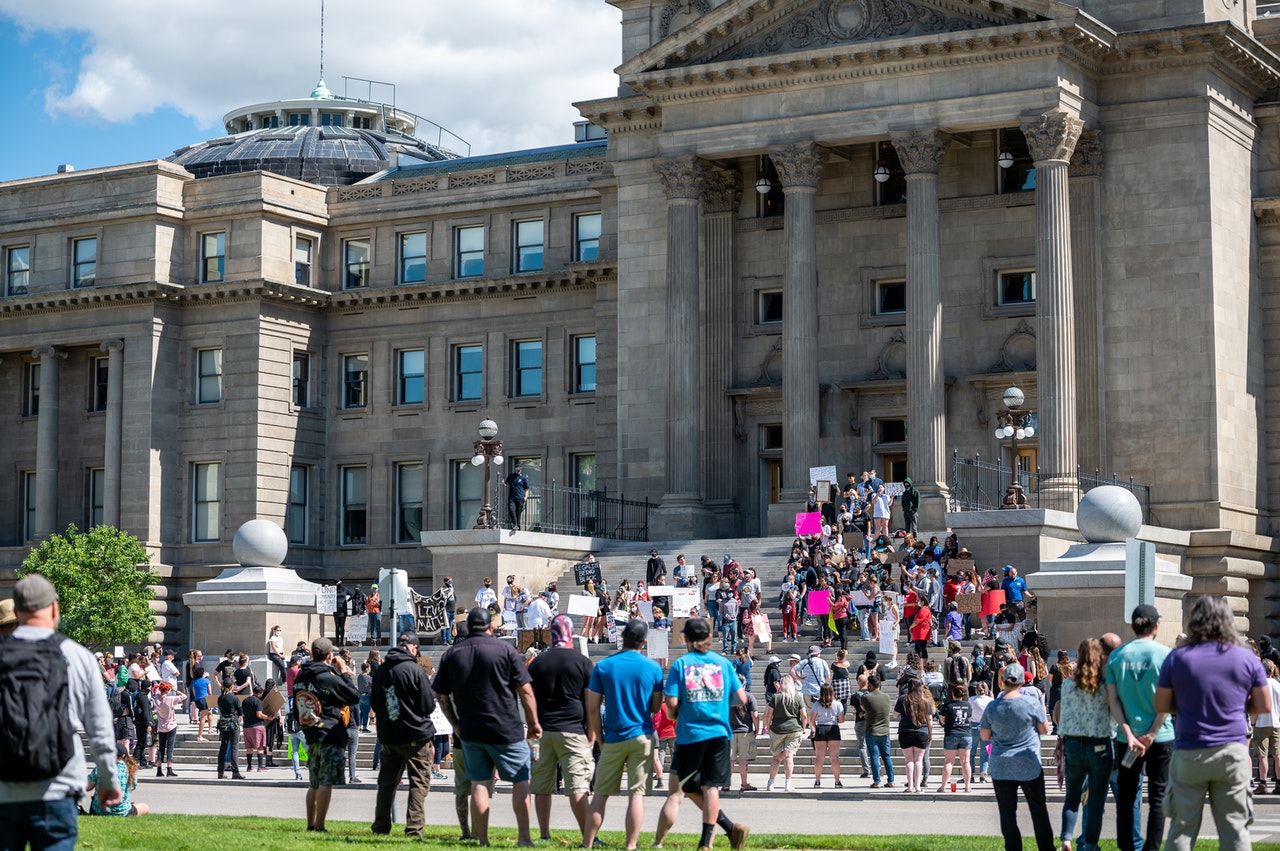
The three parts of the U.S. government are the definitive, pioneer and legitimate branches. As demonstrated by the standard of division of powers, the U.S. Constitution scattered the power of the public government among these three branches, and created a course of action of adjusted administration to ensure that no one branch could end up being exorbitantly solid.
Detachment of Powers
The Enlightenment rationalist Montesquieu established the articulation “trias politica,” or division of powers, in his strong eighteenth century work “Soul of the Laws.” His concept of an organization parceled into legitimate, pioneer and lawful branches acting uninhibitedly of each other spiced up the authors of the U.S. Constitution, who enthusiastically conflicted with concentrating an inordinate measure of power in any one collection of government.
In the Federalist Papers, James Madison made out of the need of the segment of powers to the new nation’s vote based government: “The hoarding, all things considered, administrative, pioneer and lawful chief, in comparable hands, whether or not of one, a couple, or many, and whether inborn, self-assigned, or picked, may truly be verbalized the genuine significance of persecution.”
Official Branch
According to Article I of the Constitution, the official branch (the U.S. Congress) has the fundamental capacity to make the country’s regulations. This administrative power is isolated further into the two chambers, or houses, of Congress: the House of Representatives and the Senate.
People from Congress are picked by people of the United States. While each state gets a comparable number of congresspersons (two) to address it, the amount of specialists for each state relies upon the state’s general population.
In like manner, while there are 100 congresspersons, there are 435 picked people from the House, notwithstanding an additional six non-projecting polling form delegates who address the District of Columbia similarly as Puerto Rico and other U.S. districts.
To pass a regulation of order, the two houses should pass a comparative variation of a bill by larger part vote. Whenever that happens, the bill goes to the president, who can either sign it into regulation or reject it using the refusal power given out in the Constitution.
By virtue of a standard refusal, Congress can supplant the dismissal by a 66% vote of the two houses. Both the disavowal power and Congress’ ability to override a dismissal are occurrences of the course of action of adjusted administration arranged by the Constitution to hold any one branch back from securing an unnecessary measure of power.
Presidential Branch
Article II of the Constitution communicates that the presidential branch, with the president as its head, can approve or finish the laws of the country.
Despite the president, who is the leader of the military and head of express, the presidential branch fuses the VP and the Cabinet; the State Department, Defense Department and 13 other pioneer divisions; and different other government associations, commissions and boards.
Rather than people from Congress, the president and VP are not picked straight by people as expected, yet through the selective school system. People vote to pick a record of citizens, and each balloter promises to settle on their decision for the contender who gets the most votes from people they address.
As well as stamping (or dismissing) establishment, the president can affect the country’s regulations through various boss exercises, including pioneer orders, official memoranda and presentations. The presidential branch is in like manner responsible for doing the country’s worldwide technique and coordinating tact with various countries, but the Senate ought to endorse any plans with outside nations.
Legal Branch
Article III declared that the country’s legal power, to apply and unravel the regulations, should be vested in “one high Court, and in such below average Courts as the Congress may infrequently delegate and develop.”
The Constitution didn’t decide the powers of the Supreme Court or explain how the legal branch should be composed, and for a period the legal chief took an auxiliary role to various pieces of government.
However, that all differed with Marbury v. Madison, a 1803 accomplishment case that set up the Supreme Court’s power of legal review, by which it chooses the defendability of boss and administrative regulation. Legal review is one more basic representation of the administering rules system, all things considered.
People from the public authority legal leader which fuses the Supreme Court, 13 U.S. Courts of Appeals and 94 government legal district courts-are chosen by the president and attested by the Senate. Government condemns holding their seats until they leave, die or are taken out from office through arraignment by Congress.
Recommended Powers of the Three Branches of Government
Despite the specific powers of each branch that are recorded in the Constitution, each branch has declared specific proposed abilities, an impressive part of which can be covered every so often. For example, presidents have declared particular privileges to make global techniques, without gathering with Congress.
Consequently, Congress has endorsed an establishment that unequivocally describes how the law should be directed by the presidential branch, while government courts have translated regulations in habits that Congress didn’t design, drawing charges of “managing from the seat.”
The powers permitted to Congress by the Constitution broadened essentially after the Supreme Court ruled in the 1819 case McCulloch v. Maryland that the Constitution fails to enlighten each power yielded to Congress.
Starting then and into the foreseeable future, the official branch has routinely acknowledged extra gathered abilities under the “essential and proper proclamation” or “adaptable stipulation” associated with Article I, Section 8 of the Constitution.
Adjusted administration
“In laying out an organization which is to be overseen by men over men, the unprecedented difficulty is this: You ought to at first enable the public power to control the regulated; and in the accompanying spot, oblige it to control itself,” James Madison wrote in the Federalist Papers. To ensure that all of the three pieces of government stay in balance, each branch has abilities that can be checked by the other two branches. Here are ways that the boss, legitimate leader, and definitive branches keep each other in line:
- The president (top of the official branch) fills in as leader of the strategic powers, yet Congress (authoritative branch) appropriates resources for the military and votes to report war. Furthermore, the Senate ought to support any truces.
- Congress has the impact of the handbag, as it controls the money used to help any central exercises.
- The president names government specialists, yet the Senate certifies those tasks.
- Inside the managerial branch, each spot of Congress fills in as a watch out for expected abuses of power by the other. Both the House of Representatives and the Senate need to pass a bill in a comparative design for it to become regulation.
- Whenever Congress has passed a bill, the president can dismiss that bill. Along these lines, congress can repeal a standard authority disavowal by a 66% vote of the two houses.
- The Supreme Court and other government courts (lawful branch) can announce regulations or official exercises unlawful, in a collaboration known as lawful review.
- Thusly, the president checks the lawful chief through the power of game plan, which can be used to change the direction of the public authority courts
- By passing updates to the Constitution, Congress can sufficiently look at the decisions of the Supreme Court.
- Congress can reprimand the two people from the boss and lawful branches.


